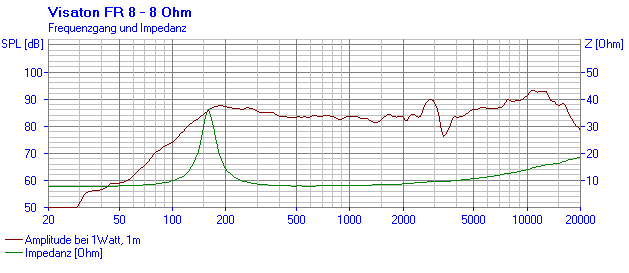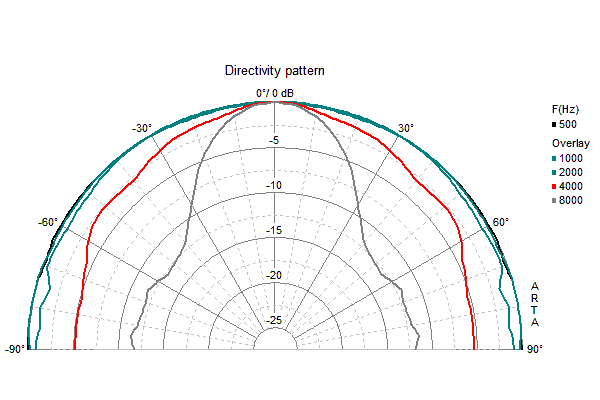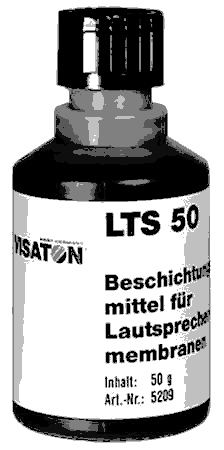Modern radio amateurs often use radio equipment which have elaborate possibilities for optimizing the quality of the transmitted and received audio information.
| << | An
optimal sounding communications loudspeaker. |
Modern
radio amateurs often use radio equipment which have elaborate possibilities for optimizing
the quality of the transmitted and received audio information.
However, the electrical audio signals from a receiver have to be transformed into acoustical signals. This is done for more than 100 years using loudspeaker systems. Predominately by the use of a magnet, a by alternating current driven "voice coil", which in turn drives a membrane (voice cone). The user expects a 1:1 translation from electrical alternating current into sound waves. But this is NOT a simple task. Long time pleasant and effortless listening is often not possible.
I use for years now an optimal constructed small home build little speaker, for neutral sound reproduction of the frequency range between 150 Hz and 3 kHz. At the outside of the front is a small wide band loudspeaker unit screwed. It has an ample low self resonance frequency of 150 Hz, a nice flat and smooth frequency response and (important) good sound spreading up to 3 kHz and higher. In plain language : when listening at an angle of 45 degr. from the speakers main axis, the frequency characteristic is nearly the same as when listening on the main axis. In practice this is a reason for natural, detailed reproduction, and effortless long time listening.
However, the sound
reproduction could negatively be influences by :
1. Standing waves between sides and the center in the cone material.
The user should choose a loudspeaker unit which has no cone
resonance below a frequency of 4 kHz.
The user could damp an occurring cone resonance by
applying
"Beschichtungsmittel für Lautsprechermembranen".
This material damps cone resonance, and smoothens the
frequency response further.
2. Resonating
speaker cabinet walls.
The cause is a lack of mass and stiffness of the cabinet
walls.
For instance when thin light weight plastic is used.
 The cabinet should be constructed from thick and heavy
material.
The cabinet should be constructed from thick and heavy
material.
For instance thick MDF or HDF.
3. Resonating air
inside the enclosure.
At the inside of the cabinet, apply abt. 2 cm thick acoustic
damping material.
4. Rattling of the
cabinet against the supporting table or shelf.
Apply THIN felt disks under at the underside of the cabinet.
The cabinet should be constructed from ample heavy material.
5. A
resonating/rattling speaker grille.
Use a stiff, dome shaped steel grille, screwed onto the front
of the cabinet.
6. Reflections of
sound waves by surfaces in front of the speaker.
This phenomena can cause strong
unwanted coloration of the heard sound,
so called "phasing". It sounds like selective fading.
It is result of the combination of two or more nearly equal strong sounds,
with
different phases, resulting in deep "notches" in the heard
frequency characteristic.
 The speaker should NOT be positioned at the center of a shelf
or table top,
The speaker should NOT be positioned at the center of a shelf
or table top,
but with its speaker front at the front of the supporting surface.
Thereby preventing reflections from its supporting surface.
Even a desk top 30cm below a speaker can cause phasing.
In
such a case, place the speaker more close to the front side of the desk top.
You can detect phasing, by listening to white noise, moving
your body and head.
If the color of the noise changes, phasing occurs. Try another
speaker position.
The space inside the cabinet may NOT COMPLETELY filled with acoustic damping material. The result should be a minimal volume of free moving air, a much higher speaker low frequency resonance, and much weakened low frequency response. Just use abt. 2cm thick acoustic damping material at all cabinet walls inside, except the front wall. The simplest way is to use a sheet of in shape cut acoustic foam. See the drawing. Push it through the speaker hole, and press it against the walls. The 3.5 cm smaller side parts of it will press top and bottom parts in place. Gluing or nailing is not needed. Due to the ample free air volume, the speaker units low frequency resonance will be as low as practical possible, but the air will damp it, smoothening the low frequency characteristic (preventing "humming sound") .
My cabinet outside dimensions are : 18,6cm x 18,6cm x 23,6cm. I used 18mm MDF, which was sawed not with 45 degr. sides, but simply with 90 degr. sides. This simplifies air tight construction, by nailing sides together with ample wood glue in-between.
De small broad band
speaker unit was screwed not at the inside, but from the outside onto the
cabinet front. With a little compound between the cabinet front and the speaker
unit, to make the connection air tight. This has the following advantages :
The cabinet can be constructed fully closed, without any
remove able side.
And is optimal air tight.
The damping material sheet can be pushed inside through the speaker
opening..
Important : the sides of the speaker opening in the
cabinet front are behind the speaker cone, and cannot cause reflections nor
phasing in front of the speaker cone..
|
|
 Materials :
Materials :
1x 18mm MDF 18,6cm
x 18,6 cm (front) with a 75mm hole.
1x 18mm MDF
18,6cm x 18,6 cm (back wall)
2x
18mm MDF 20cm x 18,6 cm (top and bottom)
2x 18mm MDF 20cm x 15 cm
(side walls).
Visaton loudspeaker unit
:
BF45 (small but very nice)
or
F8 SC (8 Ohms impedance)
or
FR8-8 (8 Ohms impedance)
Loud speaker grille 8ES (for 8 cmm)
Sheet of acoustic damping foam 51x47 cm, cut to shape. See drawing..
"Beschichtungsmittel für Lautsprechermembranen". . This is fluid resonance damping material for applying to paper speaker cones.
See
:
http://www.visaton.de/de/produkte/industrie/breitband-systeme
|
|
|
|
|
|